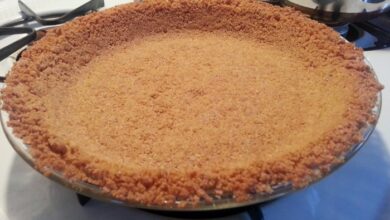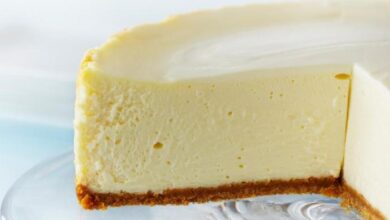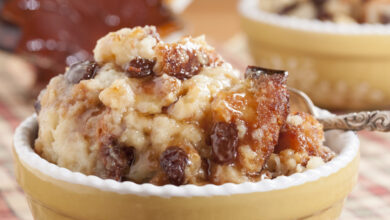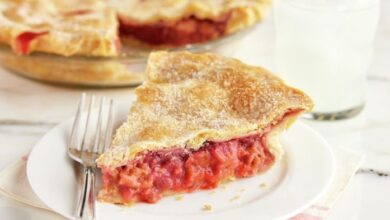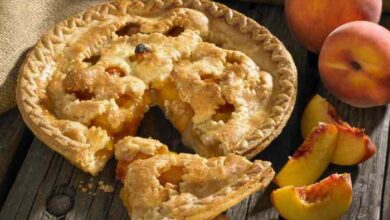
The Best Rolled Sugar Cookies: A Guide to Perfect Baking
The best rolled sugar cookies are more than just a sweet treat; they’re a blank canvas for creativity, a nostalgic comfort food, and a perfect way to celebrate any occasion. Whether you’re a seasoned baker or a novice in the kitchen, mastering the art of rolled sugar cookies is a rewarding endeavor that unlocks a world of delicious possibilities.
From the perfect dough consistency to the endless variations and decorating techniques, we’ll explore everything you need to know to bake and decorate rolled sugar cookies that are as delightful to look at as they are to eat. Join me on this sweet journey as we unlock the secrets to creating the best rolled sugar cookies you’ve ever tasted.
The Perfect Rolled Sugar Cookie Recipe
The classic rolled sugar cookie is a beloved treat for a reason. It’s simple to make, versatile, and always delicious. The key to achieving the perfect rolled sugar cookie lies in understanding the role of each ingredient and mastering the dough’s consistency.
Ingredients and Their Roles
The ingredients in a rolled sugar cookie recipe work together to create a cookie that is both flavorful and holds its shape well.
- Flour:Flour provides the structure and texture to the cookie. It also absorbs moisture from the other ingredients, preventing the dough from becoming too sticky.
- Butter:Butter adds flavor and richness to the cookie. It also helps to create a tender and crumbly texture.
- Sugar:Sugar contributes sweetness and helps to create a chewy texture.
- Eggs:Eggs bind the ingredients together and add moisture to the dough.
- Vanilla Extract:Vanilla extract enhances the flavor of the cookie.
Achieving the Ideal Dough Consistency
The consistency of the dough is crucial for rolling and cutting out shapes.
- Too sticky:If the dough is too sticky, it will be difficult to roll and cut. You can add a little more flour, one tablespoon at a time, until the dough reaches the desired consistency.
- Too dry:If the dough is too dry, it will be difficult to roll and may crumble. You can add a little more milk or water, one teaspoon at a time, until the dough reaches the desired consistency.
- Ideal consistency:The dough should be firm enough to hold its shape when rolled out but soft enough to cut easily. It should feel smooth and slightly tacky to the touch.
Variations on the Classic Recipe
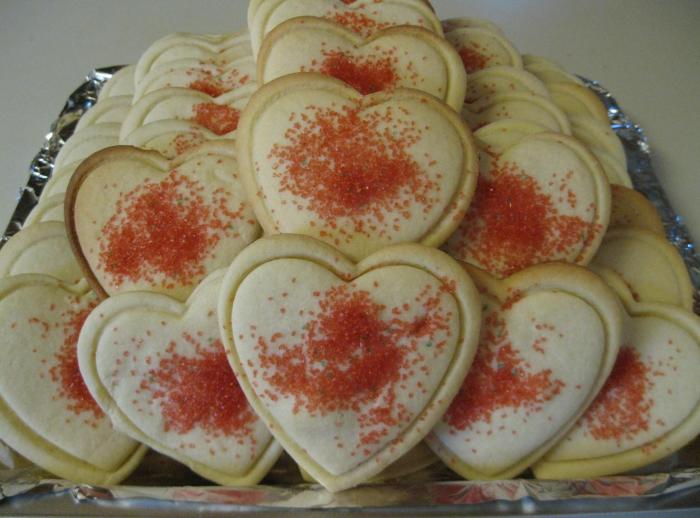
The beauty of rolled sugar cookies lies in their versatility. You can easily customize the basic recipe to create an array of flavors and textures. From classic additions like chocolate chips to more adventurous combinations, the possibilities are endless.
Flavor Variations
Adding different flavors to your rolled sugar cookie dough is a simple way to create unique cookies. You can incorporate flavors through extracts, spices, or even fruit purees.
- Vanilla Extract:The most common addition, vanilla extract enhances the sweetness of the cookies and provides a warm, comforting flavor.
- Citrus Extracts:Lemon, orange, and lime extracts add a bright and refreshing twist. Lemon cookies are particularly popular, offering a tangy and slightly sweet flavor.
- Spices:Cinnamon, nutmeg, ginger, and cardamom are popular additions, especially during the holiday season. They add warmth and depth to the cookies.
- Fruit Purees:Adding a spoonful of fruit puree, such as apple, banana, or pumpkin, can add moisture and flavor to the dough.
Color Variations
Adding food coloring to your rolled sugar cookie dough is a fun way to create colorful cookies. You can use gel food coloring for the most vibrant hues.
- Red:Red food coloring can be used to create cookies for Valentine’s Day or other special occasions.
- Green:Green food coloring is perfect for creating cookies shaped like Christmas trees or other holiday symbols.
- Blue:Blue food coloring is a popular choice for creating cookies for birthdays or other celebrations.
Inclusions
Adding inclusions, such as chocolate chips, nuts, or sprinkles, can add texture and flavor to your rolled sugar cookies.
- Chocolate Chips:Chocolate chips are a classic addition to rolled sugar cookies, adding a rich and decadent flavor.
- Nuts:Chopped nuts, such as pecans, walnuts, or almonds, can add a crunchy texture and nutty flavor.
- Sprinkles:Sprinkles are a fun and festive addition, adding a pop of color and a bit of sweetness.
Chocolate Chip Cookies
Chocolate chip cookies are a popular variation of rolled sugar cookies. The addition of chocolate chips adds a rich and decadent flavor to the cookies.
Chocolate Chip Cookie Recipe
1 cup (2 sticks) unsalted butter, softened
3/4 cup granulated sugar
3/4 cup packed light brown sugar
2 large eggs
2 teaspoons vanilla extract
2 1/4 cups all-purpose flour
1 teaspoon baking soda
1 teaspoon salt
1 cup semisweet chocolate chips
Instructions:
Preheat oven to 375 degrees F (190 degrees C).
Cream together butter and sugars until light and fluffy.
Beat in eggs one at a time, then stir in vanilla.
In a separate bowl, whisk together flour, baking soda, and salt.
Gradually add dry ingredients to wet ingredients, mixing until just combined.
Stir in chocolate chips.
Drop by rounded tablespoons onto ungreased baking sheets.
Bake for 9-11 minutes, or until edges are golden brown.
Let cool on baking sheets for a few minutes before transferring to wire racks to cool completely.
Gingerbread Cookies, The best rolled sugar cookies
Gingerbread cookies are a popular variation of rolled sugar cookies, especially during the holiday season. They are known for their warm, spicy flavor and their distinctive gingerbread aroma.
Gingerbread Cookie Recipe
1/2 cup (1 stick) unsalted butter, softened
1/2 cup granulated sugar
1/2 cup packed light brown sugar
1 large egg
1/4 cup molasses
1 teaspoon ground ginger
1 teaspoon ground cinnamon
1/2 teaspoon ground cloves
1/4 teaspoon ground nutmeg
2 1/2 cups all-purpose flour
1 teaspoon baking soda
1/2 teaspoon salt
Instructions:
Preheat oven to 350 degrees F (175 degrees C).
There’s something so satisfying about biting into a perfectly rolled sugar cookie, the crisp edges giving way to a soft, sweet center. But if you’re looking for a slightly lighter, yet still decadent treat, I recommend trying my recipe for vanilla coconut flour cupcakes.
They’re moist, fluffy, and have a delicate coconut flavor that pairs beautifully with a classic vanilla frosting. And let’s be honest, sometimes you just need a little something sweet to brighten your day, and those sugar cookies always hit the spot!
In a large bowl, cream together butter and sugars until light and fluffy.
Beat in egg, then stir in molasses.
In a separate bowl, whisk together flour, baking soda, salt, ginger, cinnamon, cloves, and nutmeg.
Gradually add dry ingredients to wet ingredients, mixing until just combined.
Roll out dough on a lightly floured surface to 1/4 inch thickness.
Cut out shapes using cookie cutters.
You know, sometimes the best rolled sugar cookies are the ones that pair perfectly with a savory dish. I recently made a batch of my grandmother’s recipe, and they were absolutely divine with a slice of baked ham with glaze.
The sweetness of the cookies cut through the richness of the ham, creating a delightful contrast of flavors. I highly recommend trying this combination!
Place cookies on ungreased baking sheets.
Bake for 8-10 minutes, or until edges are lightly browned.
Let cool on baking sheets for a few minutes before transferring to wire racks to cool completely.
Snickerdoodles
Snickerdoodles are a classic variation of rolled sugar cookies. They are known for their soft, chewy texture and their distinctive cinnamon-sugar coating.
Snickerdoodle Cookie Recipe
1 cup (2 sticks) unsalted butter, softened
1 1/2 cups granulated sugar
2 large eggs
1 teaspoon vanilla extract
2 1/4 cups all-purpose flour
1 teaspoon cream of tartar
1/2 teaspoon baking soda
1/4 teaspoon salt
2 tablespoons granulated sugar
1 teaspoon ground cinnamon
Instructions:
Preheat oven to 400 degrees F (200 degrees C).
In a large bowl, cream together butter and sugar until light and fluffy.
Beat in eggs one at a time, then stir in vanilla.
In a separate bowl, whisk together flour, cream of tartar, baking soda, and salt.
Gradually add dry ingredients to wet ingredients, mixing until just combined.
In a small bowl, combine 2 tablespoons sugar and cinnamon.
Roll dough into 1-inch balls.
Roll each ball in cinnamon-sugar mixture.
The best rolled sugar cookies are a classic treat that always brings back happy memories. They’re simple to make, but the possibilities for decorating are endless. If you’re looking for a sweet and refreshing treat to enjoy alongside those cookies, I highly recommend checking out this recipe for double chocolate frozen fudge pops.
The rich chocolate flavor and creamy texture are a perfect complement to the sweet and buttery cookies.
Place cookies on ungreased baking sheets.
Bake for 8-10 minutes, or until edges are lightly browned.
Let cool on baking sheets for a few minutes before transferring to wire racks to cool completely.
Rolling and Cutting Techniques
Rolling and cutting the dough is a crucial step in creating perfect rolled sugar cookies. The process ensures even baking and a consistent shape and size for your cookies. The key is to achieve an even thickness throughout the dough.
Rolling Pin Selection and Use
The type of rolling pin you use can significantly impact the consistency of your dough.
- Traditional Rolling Pins: These are the most common type, typically made of wood or marble. They are simple to use and effective for rolling out dough, but they can be difficult to achieve a perfectly even thickness.
- French Rolling Pins: These rolling pins have handles on both ends, allowing for a more balanced and controlled rolling motion. They also often feature bearings that make rolling smoother and easier.
- Adjustable Rolling Pins: These rolling pins have adjustable rings that allow you to set a specific thickness for your dough. This is a great option for achieving consistent thickness, especially for beginners.
Regardless of the type of rolling pin you choose, here are some tips for achieving a consistent thickness:
- Use a lightly floured surface: This will prevent the dough from sticking. Sprinkle flour generously on your work surface, and be sure to lift the dough and flip it over as you roll to ensure that both sides are evenly floured.
- Apply even pressure: Avoid pressing too hard on the rolling pin, as this can cause the dough to become thin in some areas. Instead, roll the dough back and forth with a light, even pressure.
- Roll in all directions: Rolling in only one direction can create uneven thickness. Roll the dough in all directions, including diagonally, to ensure even thickness.
- Use a ruler: If you want to achieve a specific thickness, use a ruler to measure the dough’s height after each roll.
Preventing Dough Sticking
Sticking is a common problem when rolling out cookie dough. Here are some tips for preventing this:
- Chill the dough: Chilling the dough before rolling will make it less sticky and easier to work with.
- Use parchment paper: Rolling the dough between two sheets of parchment paper will prevent it from sticking to the surface and make cleanup easier.
- Flour generously: Be sure to flour both the dough and your work surface to prevent sticking.
- Avoid overworking the dough: Overworking the dough can make it tough and more prone to sticking.
Cookie Cutter Inspiration
The right cookie cutter can transform your simple sugar cookies into delightful works of art. From classic shapes to intricate designs, the possibilities are endless! Choosing the perfect cutter can make the difference between a simple treat and a truly memorable creation.
Cookie Cutter Shapes and Sizes
The variety of cookie cutter shapes and sizes available is truly astonishing. You can find cutters in virtually any shape imaginable, from basic circles and squares to intricate floral designs and whimsical characters.
- Classic Shapes:Circles, squares, hearts, stars, and triangles are timeless choices that work well for any occasion.
- Animals:Cute animal shapes, such as cats, dogs, bears, and penguins, are always a hit with kids.
- Holidays:Seasonal shapes like pumpkins, Christmas trees, snowflakes, and Easter eggs are perfect for festive baking.
- Characters:From popular cartoon characters to superheroes, there are cookie cutters for almost any beloved character.
- Alphabet and Numbers:These cutters are perfect for creating personalized messages and decorating cakes.
Popular Themes for Cookie Cutters
Cookie cutters are often themed around holidays, animals, and characters. This allows you to create cookies that are both visually appealing and relevant to the occasion.
- Holidays:Holiday-themed cookie cutters are a popular choice for festive baking. Christmas cookies, for example, might feature Santa Claus, reindeer, snowflakes, and Christmas trees. Halloween cookies might feature ghosts, pumpkins, bats, and witches.
- Animals:Animal-shaped cookie cutters are a fun choice for any occasion, especially for kids’ parties. You can find cutters in the shapes of cats, dogs, bears, penguins, and many other animals.
- Characters:Character-themed cookie cutters are a great way to add a touch of fun to your baking. You can find cutters in the shapes of popular cartoon characters, superheroes, and other beloved figures.
Choosing the Right Cookie Cutter for Different Occasions
Choosing the right cookie cutter for your occasion is essential for creating a memorable and visually appealing treat.
- Birthday Parties:For birthday parties, consider cutters in the shape of the birthday person’s favorite characters, animals, or hobbies.
- Holidays:For holidays, choose cutters that reflect the theme of the holiday. For example, for Christmas, you might choose cutters in the shape of Santa Claus, reindeer, snowflakes, and Christmas trees.
- Everyday Baking:For everyday baking, classic shapes like circles, squares, hearts, and stars are always a good choice.
Decorating Rolled Sugar Cookies: The Best Rolled Sugar Cookies
The blank canvas of a rolled sugar cookie is just waiting for your creative touch! Decorating these delightful treats can range from simple sprinkles to intricate, artistic masterpieces. Let’s explore the world of cookie decorating techniques and discover how to elevate your sugar cookie game.
Icing Techniques
Icing is the most popular and versatile method for decorating rolled sugar cookies. It allows for a wide range of designs, from simple Artikels to elaborate, multi-colored masterpieces.
- Royal Icing: Royal icing is a classic choice for cookie decorating. It’s made with powdered sugar, egg whites, and a bit of lemon juice. It dries hard and creates a crisp, smooth finish. It’s perfect for intricate details, lettering, and delicate designs.
- Flooding Icing: Flooding is a technique used to fill in larger areas of the cookie with icing. It’s typically done with a thinner consistency of royal icing, allowing it to flow smoothly and create a flat, even surface.
- Outlining Icing: Outlining is the process of creating the borders of your design with icing. It’s typically done with a thicker consistency of royal icing, allowing it to hold its shape and create crisp lines.
Basic Icing Designs
With a little practice, you can create beautiful designs using just outlining and flooding techniques.
- Outlining and Flooding: This is a classic technique that involves outlining the design with a thicker icing and then flooding the interior with a thinner icing. This creates a clean, crisp look.
- Wet-on-Wet: This technique involves applying wet icing onto wet icing, creating a blended effect. This is great for creating ombre designs or soft, flowing patterns.
- Piping: Piping involves using a piping bag and different tips to create various designs, from simple dots to intricate swirls. This technique is versatile and allows for endless creative possibilities.
Achieving a Smooth, Even Finish
A smooth, even finish is key to professional-looking decorated cookies.
- Consistency is Key: The consistency of your icing is crucial for achieving a smooth finish. Too thick, and it will be difficult to spread; too thin, and it will run.
- Smooth It Out: Use a toothpick or a small offset spatula to smooth out the icing and eliminate any air bubbles.
- Let It Dry: Allow the icing to dry completely before handling the cookies. This will prevent smudging and ensure a crisp finish.
Sprinkles and Edible Paint
Sprinkles and edible paint are fun and easy ways to add a touch of whimsy to your cookies.
- Sprinkles: Sprinkles come in a wide variety of colors, shapes, and sizes. They can be sprinkled directly onto the cookie before the icing dries or used to create decorative patterns.
- Edible Paint: Edible paint is a great option for creating fine details or adding color to your designs. It’s available in a variety of colors and can be applied with a small brush.
Storing and Serving Rolled Sugar Cookies
All that hard work deserves to be enjoyed! Whether you’re gifting these treats or keeping them for yourself, proper storage is key to maintaining their delightful texture and flavor. Let’s explore the best ways to keep your rolled sugar cookies fresh and ready to impress.
Storage Techniques
Storing rolled sugar cookies correctly ensures they stay fresh and delicious for days. Here are some effective storage methods:
- Airtight Containers:This is the most common and effective method. Place your cooled cookies in an airtight container, ensuring they are not stacked too tightly. This prevents them from becoming soft or stale.
- Freezer Storage:For longer storage, freeze your cookies in an airtight container or freezer-safe bag. This can extend their shelf life for up to 3 months. When ready to enjoy, thaw them at room temperature or in the refrigerator for a few hours.
Serving Temperatures
Rolled sugar cookies are best served at room temperature. This allows the flavors to fully develop and the texture to be crisp and delightful.
Cookie Platter Presentation
Presenting your cookies beautifully enhances the overall enjoyment. Here are some tips for creating a stunning cookie platter:
- Variety is Key:Offer a range of cookie shapes, sizes, and colors for visual appeal. Mix and match different cookie cutters to create a diverse and interesting display.
- Height and Texture:Use a combination of cookies placed on different levels to create a visually appealing arrangement. This can be achieved by placing some cookies on a small cake stand or using different sized platters. You can also incorporate small decorative elements like edible flowers, sprinkles, or chocolate shavings for added texture and visual interest.
- Color Coordination:Consider using a color scheme for your cookie platter. For example, a holiday platter could feature red, green, and white cookies, while a spring platter might feature pastel shades.
- Placement and Spacing:Arrange the cookies on the platter in a visually appealing way. Leave some space between each cookie to prevent them from sticking together. You can also create clusters of cookies in different sizes and shapes.

